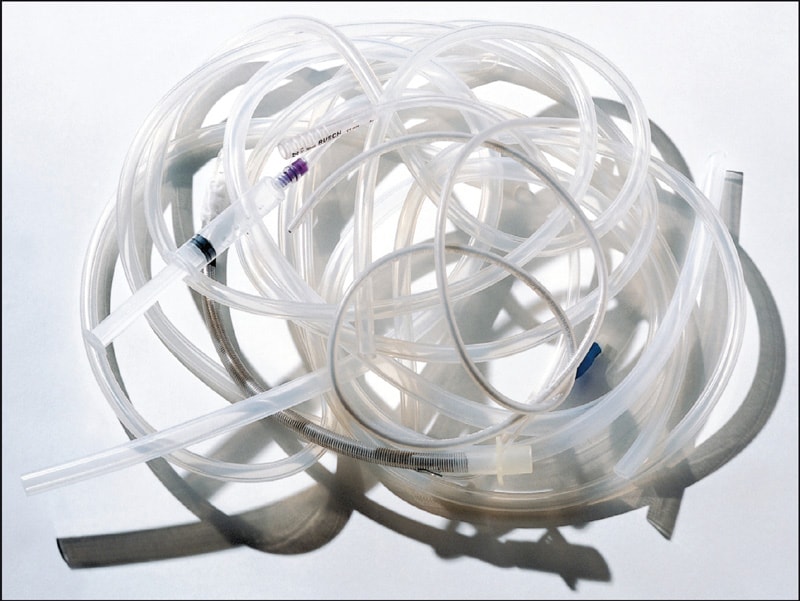Healthcare-related tube is utilized for drainage and fluid management in addition to with peristaltic pumps, IVs, catheters, respiratory and anesthesiology gear, and biopharmaceutical laboratory equipment. It is very important that the materials used meet the quality requirements.
Silicone elastomers are the substance of choice for use in health care tube or other extruded profiles that require compliance. Once silicone rubber is converted into cured silicone tubing or extruded profiles, it includes no plasticizers that could leach or be extracted, nor does it retain by-products of the reaction. Even though it is encouraged to stabilize measurements and mechanical properties A process isn’t required.
Silicone elastomers outperform conventional thermoplastics such as polyvinyl chloride (PVC), polyethylene (PE), polyurethane (PU), ethylene vinyl acetate (EVA), and poly-isoprene in extrusion applications, bringing entire significance in processing and performance. Table 1 shows a comparison of silicone, PTE, and PVC. Elastomers have excellent stability, and also their inherent strength and flexibility hold very thin-wall tube profiles. What’s more, they may be extruded with significant cross sections as profiles. Generation space can be lessened short-curing tunnels which require heating components and by vertical toaster placement. Throughput of up to 50 ft/min is attainable with the equipment. Silicone elastomers are available as an individual – or – two-component rubber system.
MATERIAL CHARACTERISTICS
Elastomers give exceptional heat resistance and chemical resistance and are available in a vast range of durometer ranges. Silicone elastomer tubing is resistant to environmental factors such as chemicals temperature, UV radiation, and x-rays. Their use in medical applications is driven in part from the fact that they don’t support microbial growth and resist adhering to body . Silicone elastomer tubing can be sterilized with many different changes in properties or methods with minimal performance degradation. This reflects that the equilibrium of silicone. Once made to a part, silicone rubber is consumed by steam, ethylene oxide, e-beam, gamma, and beta radiation prior to its end usage.
One of those singular traits of silicone elastomers is the silicone-oxygen (Si-O) bond. Energy and equilibrium of saline is the strongest contributor to both biodurability, or the ability resist body fluids and to have skin contact. The many hardness options of silicone remain elastic without additives — something that is essential in biocompatibility. Silicone, by nature, has a high level of translucency due to the refractive indexes of the filler and plastic which are used, and it provides colorability. There are pigment choices that are various silicone elastomers can be clear for flow and fluid visualization.
Another silicone trait is vapor permeability, which explains silicones are used in prosthetics and care and possess large biocompatibility for skin contact the reason why. Silicone is easy to process and is used in most kinds of rubber processing, e.g., molding utilizing compression or transfer, along with extrusion.
Silicone rubber has good resistance to weathering, UV radiation, and x-rays. These goods can be created radiopaque with the addition of barium sulfate, in order that they are visible in x-rays, especially for implantable pieces.
SILICONES FOR HEALTHCARE
Wacker, by way of example, offers many families of elastomers for health care applications.
These criteria guarantee that silicones are both biocompatible and non-cytotoxic, and that they can be utilized for implantation of less than 30 days. Device Master Files are and they are available for ELASTOSIL® products. SILPURAN® goods are cleanroom packaged specifically for healthcare programs. ELASTOSIL® goods are products which comply with the healthcare criteria. All these are offered in many different durometers.
CONCLUSION
Because of their characteristics, silicone elastomers are the substance of choice for medical, pharmaceutical, and biotech applications. Ease and biocompatibility of usage direct the list of benefits gained from using silicone elastomers. With such versatility that is great, they give cost/benefit ratio and an option to elastomers from extrusion products for health care programs.

